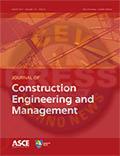Abstract
In construction and renovation works, the application of innovative materials, products, and methods (further referred to as IMMs) within green buildings (GBs) is an important source of release of contaminants. However, the risks associated with the health of construction workers in the application of IMMs in GBs have not yet been fully evaluated.
This systematic review evaluated research on materials released from the application of IMMs, and associated occupational exposures, health risks of construction workers, and potential interventions to reduce emissions during construction works. Studies were identified through four databases: Scopus, Clarivate’s Web of Science, Embase, and PubMed.
Preferred reporting items for systematic reviews and meta-analyses approach were followed. Through this review, 109 identified studies resulted in the full-text review of 32 papers containing data on the release from the application of IMMs, and potential interventions to reduce the release of contaminants or exposure during construction works.
Depending on the type of activity, energy applied, equipment used, and intervention applied, the time-weighted average (TWA) respirable crystalline silica concentrations from grinders ranged from 114.8–583 μg/m−3, exceeding the America Conference of Industrial Hygienists (ACGIH) threshold limit of 0.025 mg/m3.
Regarding the efficacy of interventions, e.g., using local exhaust ventilation (LEV), wet methods, and a combination of LEV and wet methods studies indicated that with the reduction of material release exposure also was reduced; five out of nine experimental studies on artificial stone (AS) processing activities evaluated the efficacy of LEV, three evaluated wet and dry dust control methods, and one evaluated a combination of sheet-flow-wetting with LEV.
Effective interventions, including the implementation of low-cost engineering controls, are urgently needed to reduce the risk of exposure associated with the application of IMMs in the building processes.
The present study contributes to assembling evidence of the state of knowledge, insights in the application of IMMs, and the associated occupational exposure and potential health risks in the construction sector. It also explores potential interventions to reduce emissions and provides a foundation for future research in this field.
Moreover, this information offers a reference for researchers, health and safety professionals, construction industry professionals, and policymakers in controlling exposure to IMMs in the construction context.

